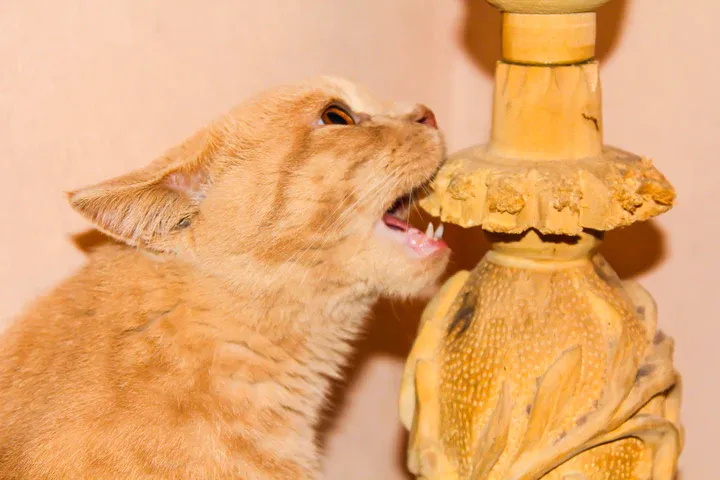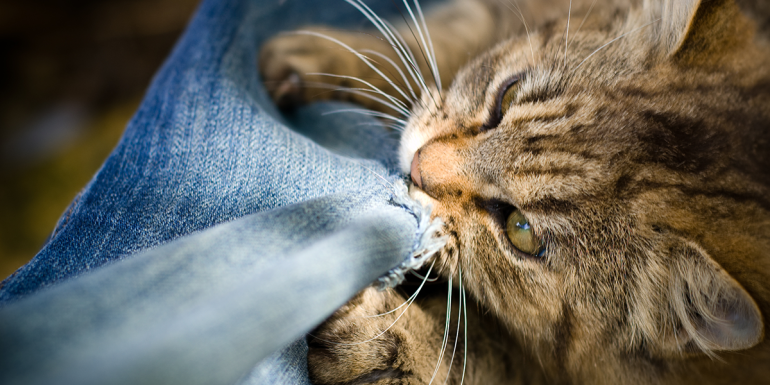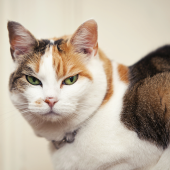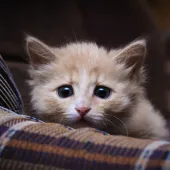Pica in Cats: Understanding Abnormal Eating and Chewing Habits

Cats are known for their curious nature and sometimes peculiar behaviors. One such behavior that can be concerning for cat owners is pica, which involves the consumption of non-food items. Understanding what pica is, its potential causes, and how to manage it can help ensure the well-being of your feline companion.
Pica - abnormal eating and chewing habits
This is what your cat is doing when it licks, chews, or eats things that aren't food: "pica." This kind of behavior can be hard for both of you. Your things might never be safe again, and what's worse, your cat is also in danger. Things that your cat swallows could get stuck inside it or be deadly. Your cat may be pica for a number of reasons; this behavior could be a sign that it is uncomfortable or could be a sign of a health problem. First, you need to figure out why your pet is acting this way. Now you can stop it.

What is pica?
Pica is a behavioral disorder characterized by the ingestion of non-food items. In cats, this can range from wool, paper, plastic, rubber bands, and even plants. It is not a specific medical condition, but rather a symptom of an underlying issue.
There are many reasons why pica should be controlled. In addition to damage to objects, the overwhelming concern is for the health and well-being of your cat. The things that your cat has eaten can get stuck in its bowel and cats chewing electrical cables can get an electric shock.
Signs of Pica
Identifying pica in your cat involves observing their eating and chewing habits. Common signs of pica may include:
-
Chewing and Gnawing: Cats with pica often exhibit an intense desire to chew on objects that are not typically considered food.
-
Consuming Non-Food Items: This may include items like fabric, plastic, hair ties, or even houseplants.
-
Vomiting or Regurgitation: Ingesting non-food items can lead to digestive issues, including vomiting or regurgitation.
-
Lethargy or Discomfort: If an ingested item causes an obstruction, your cat may display signs of discomfort, such as lethargy, loss of appetite, or changes in behavior.
Why does my cat eat objects or plants?
A cat doesn't chew on things to bother its owner. It's normal for cats to eat grass to help them go to the bathroom. If your cat does this a lot, you should take it to the vet to make sure there aren't any health problems causing the stools to be hard to pass. There are many psychological reasons why people might eat other things. Fabric-sucking is a common way for cats to feel better, so taking them away from their litter too soon or all of a sudden may make the problems more likely.
Some kinds of cats, like Siamese, Burmese, and "oriental types," are more likely to have pica. You may also see it in cats that are related to each other. But this can happen with dogs of other breeds too. There is evidence that environmental stressors are important even when there is a family trend.
In every case, there was something that upset your cat and caused them to act out. This could have been because of the mental stress of having to find a new home for the animal or because of a new animal moving into the neighborhood or into your home and causing problems. Cats sometimes develop pica because they are anxious about being away from their owner. In this case, you'll see that the behavior mostly takes place when you're not around.
Understanding the underlying causes of pica in cats is crucial for effective management. These causes can be multifaceted and may include:
-
Nutritional Deficiencies: Cats may consume non-food items in an attempt to supplement missing nutrients in their diet.
-
Medical Conditions: Gastrointestinal disorders, dental issues, or dietary intolerances can contribute to pica behavior.
-
Boredom or Stress: Cats may engage in pica as a form of entertainment or to alleviate stress or anxiety.
-
Weaning Too Early: Kittens separated from their mother and littermates too early may develop pica-like behaviors.
-
Environmental Factors: A lack of environmental enrichment or access to appropriate toys and stimuli can lead to pica.
-
Behavioral Issues: Pica can be a manifestation of underlying behavioral problems, such as obsessive-compulsive disorder.

Can pica be treated?
If your cat has pica, you should know that how you react to it can make its behavior worse without you meaning to. You shouldn't punish your pet to stop bad behavior if the problem is caused by stress. It will either make them feel even worse or make them chew away from you. On the other hand, your cat may find any kind of attention to be satisfying, and you may unintentionally encourage this behavior. As a general rule, you should not feed a cat that has pica.
To avoid a problem, move anything that your cat shouldn't chew on or eat out of the way. What if you can't do this? Like with cables? Then you might have to protect them so your pet can't chew on them.One common solution is to leave out very small pieces of the material your cat wants to eat (like a small square of wool) mixed with a small amount of something gross to make these things less appealing in the future. There is no scientific evidence to back this practice, but it probably won't hurt your cat too much as long as you make sure its other needs are met as well.
You should be aware of when your pet is uncomfortable and try to avoid those situations if you can, or teach your cat how to feel better in those situations. For some cats, like new cats, you can help them feel safe by giving them raised places to rest, feeding them little and often, and using a calming pheromone like Feliway®. These have been used and are said to be helpful in these situations, but there is no proof that they work.
Cats that live inside are more likely to show pica, so you may want to give your pet more things to do and excitement. Cats see and interact with their surroundings in three dimensions. They love having high places to rest where they can feel safe and watch what's going on around them. You could also give your pet cardboard boxes to hide in and play with you. Cat fishing rod toys are another game that your cat might enjoy. Also, you should give your cat food at the end of the game when it has caught the prey to end the hunt successfully. If you don't, your cat will get tired of the game.
Giving your cat places to look out at the world, like a nice chair next to a window, is another way to keep them stimulated. Cats like the smell of catnip, which you can put in toys for them. Note how your cat reacts to this because cats react in different ways. Some cats see things that aren't there and get more worried, while others don't react at all. Lastly, you can use food. You can hide cat food and let it find it, or you can give it "puzzle-feeders." It's possible to try a few different things until you find the ones your cat likes best.
Managing Pica in Cats
Addressing pica requires a comprehensive approach tailored to your cat's specific circumstances:
-
Consult a Veterinarian: A thorough veterinary examination is essential to rule out any underlying medical issues.
-
Dietary Adjustments: Ensure your cat is receiving a balanced, nutritionally complete diet to minimize nutritional deficiencies.
-
Provide Appropriate Toys: Offer a variety of safe, interactive toys to engage your cat's natural hunting and play behaviors.
-
Environmental Enrichment: Create a stimulating environment with scratching posts, climbing structures, and interactive playtime.
-
Behavior Modification: Positive reinforcement training can help redirect your cat's behavior towards appropriate objects.
-
Monitor and Supervise: Keep a close eye on your cat, especially in areas where they have access to non-food items.
-
Safety Measures: Store potentially hazardous items out of your cat's reach and ensure they do not have access to toxic plants.
Conclusion
Remember, managing pica may take time and patience. If you're struggling to make progress, seeking guidance from a veterinary behaviorist or certified animal behavior consultant can be immensely beneficial.
While pica in cats can be a perplexing behavior, it is manageable with the right approach. By addressing the underlying causes and providing appropriate environmental and behavioral interventions, you can help your feline companion lead a happy, healthy, and safe life.
Finally, remember that this problem is more likely to be solved if it is dealt early.This is something your cat will learn to do if it does it over and over again. In fact, most behavior problems are easiest to deal with when they are caught early. If you are afraid about any part of your cat's behavior, you should talk to your vet. If your doctor is worried, they might want to send you to an animal behaviorist. In some cases, your vet may also suggest that you give your cat some medicine to help things move along by making it less upset.



